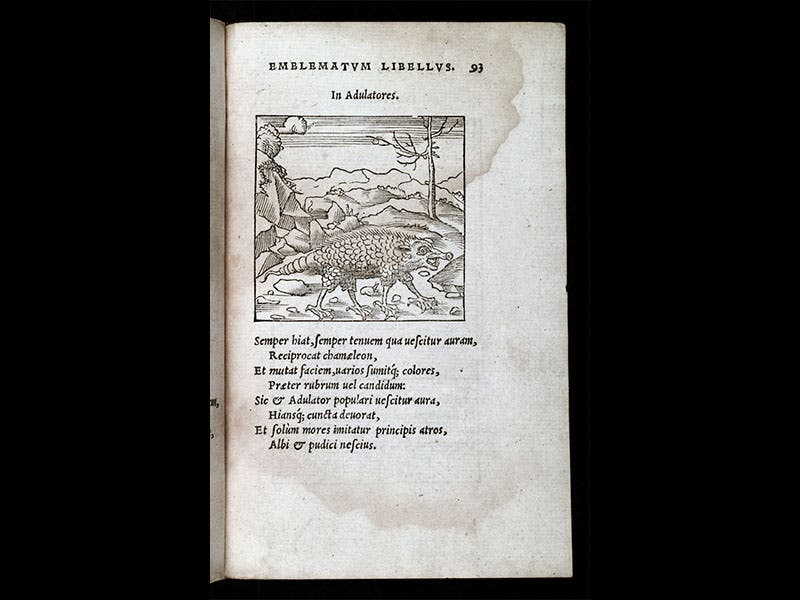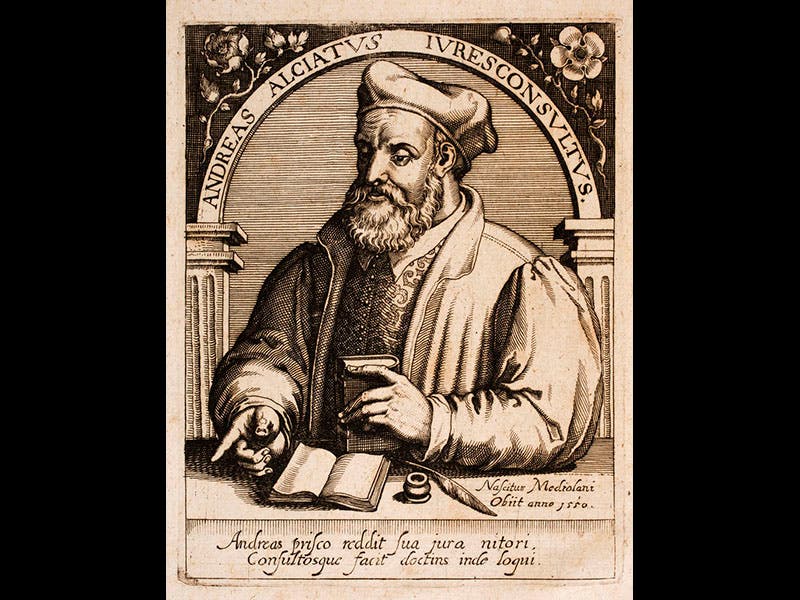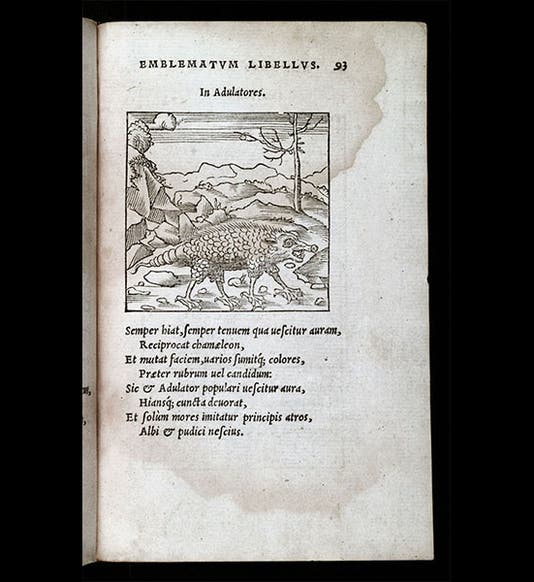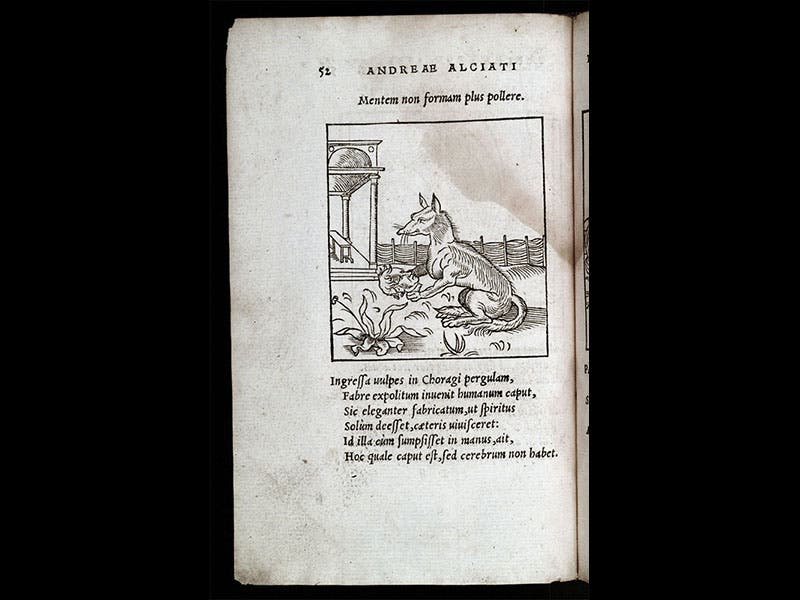Scientist of the Day - Andrea Alciato




Andrea Alciato, an Italian lawyer, was born May 8, 1492. Often referred to as Alciati in earlier literature, Alciato created a whole new literary genre in 1531 by inventing the emblem and publishing the first emblem book. An emblem, as Alciato conceived of it, consisted of three elements: an image, a pithy motto, and a short explanatory verse. In the first example above, we see a woodcut of what is identified as a chameleon, beneath a motto, "in adulatores"--"flatterers"--and a text that explains that a chameleon represents a flattering sycophant, because it changes its color to suit its surroundings. Another Alciato emblem (second image) depicts a fox looking at a theatrical mask, with the motto: "mentem non formam plus pollere"--"a mind is better than a pretty face." Only a few of Alciato's emblems depict natural objects like animals and plants, but we focus on them here, because we are interested in Alciato's impact on natural history.
Alciato's emblematic invention proved incredibly popular. By 1551, his Emblemata had gone through 14 editions, and before long other emblem writers took up the challenge, so that by the end of the century, there were literally hundreds of emblem books in print, containing tens of thousands of emblems. The natural history emblems evolved over time, as better images became available of some of the exotic animals; the chameleon emblem of 1591 (third image) is a considerable improvement over the 1534 version.
Natural history writers, such as Conrad Gessner, took a great interest in emblem literature, and in his Historia animalium (1551-58), Gessner cited Alciato frequently. This interest fed back into the emblem-writing community, so that by 1590, Joachim Camerarius began issuing an entire 4-volume emblem work that contained nothing but natural history emblems--400 of them in all. We will try to remember to feature Camerarius in this space on his birthday next Nov. 6, since we own a copy of his Symbolorum & Emblematum ex Animalibus (1605), the only emblem book in our collection. We show one of his emblems above, a tortoise, with the motto “domus optima”—“the best house” (fourth image). Ulisse Aldrovandi, in turn, cited every single relevant Camerarius emblem in his 13-volume natural history which began publication in 1599. Gesner's and Aldrovandi's great interest in emblematic and adagial lore has led to this period being identified as the age of "emblematic natural history."
There are a number of woodcuts of Alciato that appeared in portrait books of the later sixteenth century; we see one of those above (fifth image). All of Alciato’s emblems from every edition of his Emblemata are available on the splendid Alciato at Glasgow website, from which we drew our Alciato emblem images.
Dr. William B. Ashworth, Jr., Consultant for the History of Science, Linda Hall Library and Associate Professor, Department of History, University of Missouri-Kansas City. Comments or corrections are welcome; please direct to ashworthw@umkc.edu.





![Using an astrolabe to measure the depth of a well, woodcut in Elucidatio fabricae vsusq[ue] astrolabii, by Johannes Stöffler, 1513 (Linda Hall Library)](https://assets-us-01.kc-usercontent.com:443/9dd25524-761a-000d-d79f-86a5086d4774/a998eb50-55d2-4a88-ace2-a50aa5fa86e7/Stoffler%201.jpg?w=210&h=210&auto=format&fit=crop)

